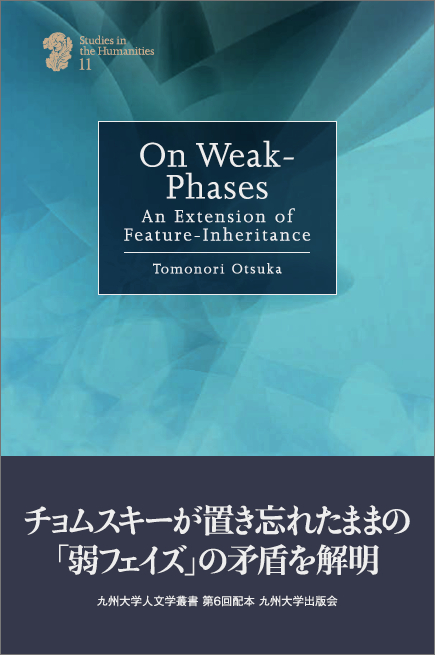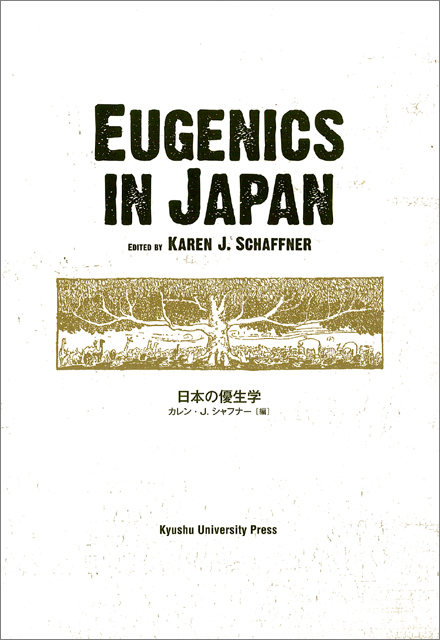- HOME >
- BOOKLIST >
- Humanities>
- On Weak-Phases
On Weak-Phases An Extension of Feature-Inheritance
Introduction
In this book, I attempt to contribute to the development of the present Phase Theory by pointing out the paradox concerning weak-phases and presenting a solution to it in terms of an activation process between strong/weak-phase heads. In order to derive the activation, this book proposes the operation called Feature-Transcription and demonstrates how it solves the paradox of weak-phases.
Moreover, another contribution of this book is to explain optional phenomena, which are difficult to derive under Chomsky’s (2008) phase theory based on the simultaneity of checking and transfer. As can be witnessed in the book, there are many phenomena related to optionality in human languages and, thus, proposing solutions to them enhances the explanatory power of the Phase Theory to a large extent.
Contents
Acknowledgments
1 Introduction
2 Theoretical Background
2.1 Uninterpretable Features and Syntactic Operations
2.2 The Phase Theory
2.3 Feature-Inheritance
2.3.1 Uninterpretable Features and Syntactic Values
2.3.2 A Simultaneity Problem
2.3.3 Richards (2007) and Feature-Inheritance
2.4 A/A-bar Distinctions
2.5 Summary
3 A Proposal
3.1 The Paradox of Weak-Phases
3.1.1 The Existence of a Strong/Weak Distinction in Phases
3.1.2 The Paradox
3.2 Previous Analyses
3.2.1 Chomsky (2001)
3.2.1.1 A Weak-Phase without Transfer
3.2.1.2 Problems with Chomsky (2001)
3.2.2 Richards (2012)
3.2.2.1 A Weak-Phase with Transfer
3.2.2.2 A Theoretical Problem in Richards (2012)
3.3 A Solution to the Paradox of Weak-Phases
3.3.1 A Logical Conclusion of the Paradox of Weak-Phases
3.3.2 An Answer: Everything at a Strong-Phase Level
3.4 A Proposal: Feature-Transcription
3.4.1 A Remaining Theoretical Question
3.4.2 Activation: Feature-Transcription
3.5 Theoretical Consequences
3.5.1 Two Possibilities of Derivations
3.5.2 An Assumption on a Case Assignment Mechanism
3.6 Summary
4 Verbal Weak-Phases
4.1 Infl ection on Passive Participles
4.1.1 Infl ection and Movement
4.1.2 A Previous Analysis: Richards (2012)
4.1.2.1 Richards’ (2012) Analysis
4.1.2.2 Problems in Richards (2012)
4.1.3 An Alternative Account
4.1.3.1 An Explanation of the Infl ection-Movement Connection
4.1.3.2 A Solution to Richards’ (2012) Problems
4.2 Thematization/Extraction
4.2.1 Thematization/Extraction: Chomsky’s (2001) Invention
4.2.2 Richards’ (2012) Approach and his Problem
4.2.3 An Alternative Account under Feature-Transcription
4.3 The Nominative/Accusative Case Conversion in Japanese
4.3.1 Previous Analyses
4.3.2 Further Problems
4.3.3 Takahashi (2011)
4.3.3.1 A Phase-Based Approach
4.3.3.2 Problems in Takahashi (2011)
4.3.4 An Alternative Account under Feature-Transcription
4.4 The Double Object Construction in English
4.4.1 An Overview of Some Analyses of the Double Object Construction
4.4.1.1 VP-shell and vP
4.4.1.2 Are the Two Constructions Related or Not?
4.4.2 Asymmetries between Indirect Object and Direct Object
4.4.2.2 Previous Analyses
4.4.2.2.1 Oba (2005)
4.4.2.2.2 Bruening (2010a)
4.4.3 The Structure of the Double Object Construction
4.4.3.1 Null-P
4.4.3.2 An Applicative Head and an Aspect Head
4.4.3.3 A Structure for the Double Object Construction
4.4.4 A Solution to the Problems
4.4.4.1 The Impossibility of A-Movement of Direct Object
4.4.4.2 The Impossibility of A-Bar Movement of Indirect Object
4.4.4.2.1 On A-Bar Movement of PP
4.4.4.2.2 An Explanation
4.4.4.3 Exceptions
4.5 Summary
5 Clausal Weak-Phases
5.1 The ECM Construction in an Irish Dialect of English
5.1.1 Does the ECM Construction Include TP or CP?
5.1.2 McCloskey (2000)
5.1.3 A Solution
5.2 The Japanese Raising-to-Object Construction
5.2.1 Another Case Conversion in Japanese
5.2.2 Previous Analyses
5.2.3 An Alternative under Feature-Transcription
5.3 Complementizer Agreement in West Flemish
5.3.1 A Puzzle of Complementizer Agreement
5.3.2 Haegeman and Koppen (2012)
5.3.3 A Possible Solution
5.4 Summary
6 Prepositional Weak-Phases
6.1 Prepositional Phases
6.1.1 A Strong-Phase p*P
6.1.2 A Weak-Phase pP
6.2 Adjunct Islands
6.2.1 Previous Analysis
6.2.2 The Labeling Algorithm
6.2.3 A Consideration on Modifi cation Relations in Syntax
6.2.3.1 Previous Analysis
6.2.3.2 Lexical Edge Features
6.2.4 Adjunct Islands
6.3 Preposition-Stranding/Pied-Piping
6.4 Preposition-Stranding in Rightward Movement
6.5 A Consideration on Edge Features
6.5.1 The Nature of “Normal” Edge Features
6.5.2 The Nature of Lexical Edge Features
6.5.3 Deriving Lexical Edge Features from θ-Role Features
6.5.4 On Phasal Edge Features and the Whole Framework in this Book
6.6 Summary
7 Concluding Remarks
References
Index
Author
Tomonori Otsuka, a Lecturer in English Linguistics, is currently teaching at Kyushu Kyoritsu University.
This book is based on his PhD thesis which was submitted at Kyushu University in 2015.
His current research focuses on Weak-Phases and Pair-Merge in the latest framework of the Phase Theory.


